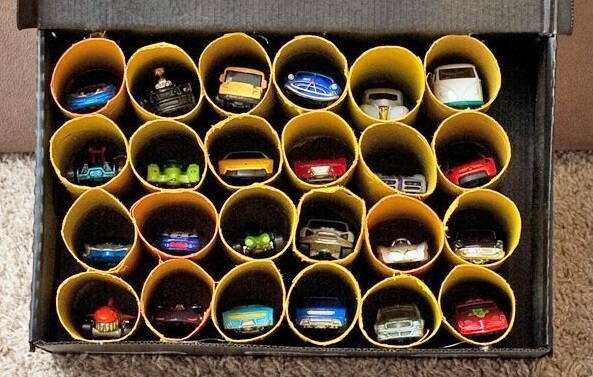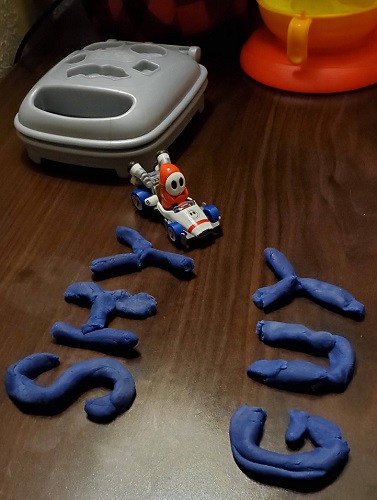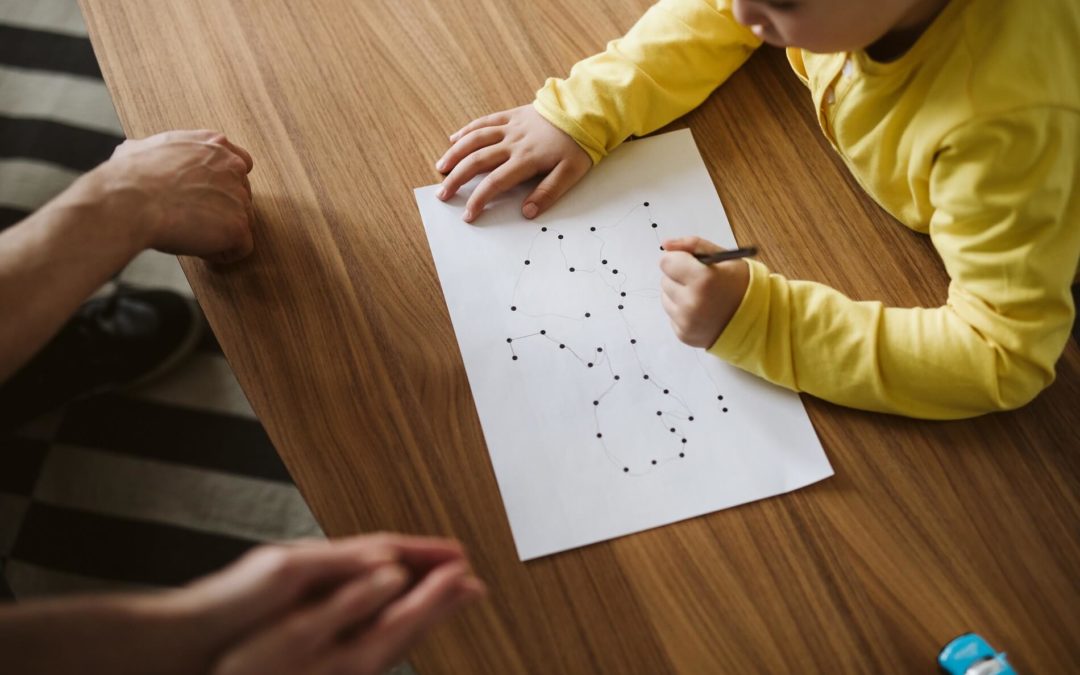Colette Ryan returns this week to discuss how we can work on academics in Floortime. She is a Expert Training Leader in the Developmental, Individual-differences, Relationship-based (DIR) Model with the International Council on Development and Learning (ICDL), the Parent Support Specialist at ICDL Livingston, a New York State endorsed infant mental health therapist, and an infant mental health fellow at Montclair State University in New Jersey working with Dr. Gerry Costa. She has also just been accepted into the PhD program in Infant and Early Childhood Development.
The idea for this podcast stems from the ICDL Parent Support Virtual Meeting each Monday that I facilitate and from the DIR Home Program where parents new to Floortime come in with ideas of where they want their child to be academically. It’s our job to inform and educate about the early social-emotional capacities, ‘Foundation Academics‘, or the Functional Emotional Developmental Capacities, as they’re called in the Developmental, Individual differences, Relationship-based (DIR) Model that must precede academics. This week Colette brings this theory into practice with some ideas for families and practitioners.
Approaching Pre-Academics with Floortime
Safety and Regulation
Colette says that we always start by looking at the Functional Emotional Developmental Capacities (FEDCs) and we know that academics begins once we’re symbolic, but there’s a lot of things we can do beforehand to ‘set the stage’. First, she continues, we always want to make sure our children feel safe in their environment, then we can look at the first capacity of regulation and shared attention. We might need to dim the lights, soften our voice, or give our loved one manipulatives so their fingers are busy. Attunement is one of the most powerful parts of regulation, Colette states. We have to read cues–which can sometimes be very subtle–so we can be that ‘best interactive partner’, according to Colette.
From Joint Attention to Engagement
Colette brings up how they work with parents on pacing in the DIR Home Program. If you’re moving too quickly, you might need to slow it down and attune your pacing to your child’s processing capacities. This brings you to engagement where you can share an experience with your loved one, which is different than joint attention, Colette explains. Dr. Peter Mundy‘s work talked about joint attention which is fabulous, but let’s take it a step further. Joint attention is us both looking at blocks, but a shared experience is us both enjoying the experience of looking at the blocks. She gives the example of being at a concert with your spouse. You have joint attention, but if one isn’t enjoying the show, you don’t have the shared joy.
Follow the Child’s Interests up the Developmental Ladder
I gave the example of my son having virtual school during lockdown. He felt safe, regulated and engaged with his classmates until the math sheet was put in front of him. Perhaps it was too hard, but on day 3 or 4 the ‘math sheet’ was a grid that was a ‘parking lot’ and instead of cutting out the cars on the 2nd sheet, he brought over his beloved Mario Kart Hotwheels cars and was able to be fully and completely engaged in the experience and successfully complete the math of 8 cars remaining after 2 cars left the parking lot of 10 cars!
Colette explains that my son made meaning of the parking lot and following his interests allowed him to experience that shared joy and participate in the activity. Colette says that if your child likes Mario, you could print off a photo of Mario who wears red and hang it from the tree outside so that when you look outside together, you have that element of surprise and figuring out how it got there which will engage them because it’s something that excites them. Maybe tomorrow it’s Luigi who wears green and you point out how it’s different! Now you’re working on colours, and same and different, Colette explains.
You can move up to the third capacity by opening and closing circles of communication around their interests. Maybe there’s 2 pictures hanging from the tree the next day! Colette explains that the child is invested because you’re talking about something they really like! The interests can lead us to the non-traditional learning. What about LEGO? Colette says that many kids won’t know what to do with the LEGO pieces that they love, so she suggests gluing on a picture of something the child likes and then separating the LEGO pieces so the child has to stack the pieces to put the picture back together. You can seal it with decoupage glue if your child would try to peel the paper off.
At the fourth capacity, you can now solve a problem together. What if we didn’t have 10 cars for our parking lot? We could wonder where to get more cars and how we’ll get them, or what we can substitute for cars. Colette suggested gluing toilet paper rolls together and numbering each opening so there are ‘parking spots’. Then you can be working on numbers while parking the cars inside the tubes.


At the fifth capacity, you can do some imaginary play and be a bit more symbolic with emotional themes. I gave the example of playing Mario Kart Hotwheels with my son where each time the car flew off the track, my son would say, “He needs a new tire!” or “He needs new paint!” We had a garage made of Jenga blocks where the cars came to get fixed and I arbitrarily numbered them verbally as each car came. I said, “He has to go in dock 1 for a tire change“. Then, “Oh no! The garage is full!” and other little ‘problems’ that come up.
What about Repetition?
I shared that it might seem repetitive that my son repeated the sequence of the car going around the track, crashing, and needing to get fixed over and over, but Colette said that is fine! Repetition helps us learn. Many of us are used to driving. Each day, we back out of our driveway successfully. What if one day, instead of your car it was a motorcycle? Colette says she might be fearful and not want to go out because she doesn’t have a motor plan for how to drive a motorcycle. Similarly, my son loves Mario Kart. He might not want me to include other characters that he doesn’t have a motor plan for. It might dysregulate him.
Pacing
Colette says it’s great to repeat play sequences with our children so they are comfortable before we change up one little thing, then repeat that sequence before we again expand. Colette brought up pacing earlier in the podcast but I pointed out that challenging and expanding is also about pacing. We don’t want to be rushing and pushing academics on our children before they can assimilate and think about the new information or skill they are learning, as Dr. Tippy said in our Good Education podcast. How receptive to change our children are also depends on our children’s cognitive load in the moment. If they are tired or hungry, or had a hard day, it might be too much in that moment.
I shared an example of how I did a Floortime session with my son where I introduced his old favourite Thomas trains in with his Mario Kart Hotwheels and acted as the voice of one of the trains commentating on his race. He was hesitant, but didn’t protest and even handed me a new train after a short time. I checked in if this was to be the new commentator, and he said yes. However, when I tried to include the PJ Masks rocket, he pushed it to the side of the room and wouldn’t have any of it! Colette said that another time, he might be ok with the PJ Masks toy, too because after he processes this new idea that he’s not used to, he might be ok with it later.
Virtual Learning
As we move into the sixth capacity, children are getting ready for academics because they can now think symbolically, emotionally, and logically. This is where the challenge is with virtual learning for many parents. They want their children to be learning, but our children aren’t ready to sit at a computer and learn at a capacity that’s beyond where they’re currently at. Colette adds that learning is a multi-sensory experience which is challenging while sitting at a computer. The degree of attending, interest, and retaining information goes down, Colette says.
Learning is a Multi-Sensory Experience
To think about the multi-sensory experience, Colette describes play at the first two capacities: it’s sensory play. You might have a bin of sand and share experience with that. In capacities three and four we are in functional play: playing with an item in the way it was meant to be played with. Colette suggests putting alphabet letters in the sand. Then at the fifth and sixth capacities the sandbox of letters becomes the treasure chest in pretend play. You can then dig up the letters and match them onto a puzzle or paper of missing letters. So academics doesn’t have to be sitting at a desk and drilling about the alphabet. Now it will have an emotional experience tied to it as you shared the experience together learning the letters.
I gave the example of my son loving his Playdoh. He is always squeezing it while he is watching videos while I prepare food and he has a fidget kit at school as well with Playdoh that he uses while he’s waiting between activities. Occupational Therapist Maude Le Roux had suggested a couple years ago that we start making letters out of plasticine as a pre-printing activity.
Colette adds that we could spell Mario Kart names with the Playdoh or plasticine and build the track. She showed her container of putty that had Paw Patrol characters stuck in it. She might have started playing with the putty (sensory play), then used the stuck characters in it to socially problem solve.
Next, they’d see there are two of each character so they could do matching. She might have different sizes of the same character, so now they’re working on ‘big’ and ‘small’. When they’re stuck ‘in’ the putty, we have to get them ‘out’ and now we’re working on prepositions.

There’s so many things that we can do to set the stage for learning academics, but through things that kids are interested in. It doesn’t all have to be, “Let’s sit down at a table and learn these pre-academics”. Sometimes we as parents think that we have to teach them these things. It’s something we have to do. But if we can think of ways to do it so kids want to do it, that’s where the magic happens. That’s where academics now become, “Ooo! Let’s do that again” instead of, “Uh, THAT again?”
Just how emotions need to be experienced to be understood, these concepts need to be experienced to be understood. Physically moving cars from the parking lot and understanding that there are less of them left is different than cognitively subtracting while staring at a computer screen. Do we have a visual and understand quantity and what it feels like when there are 2 or 8 cars, or LEGO blocks, for instance. How can we take a skill that I want to teach and make it around an activity my child likes is the question, Colette says.
Rebecca School NYC DIR Conference Presentation
I described the Speech and Language session my son had virtually that used his love of Mario Kart to sustain his engagement and participation for a full 45 minutes that Sabrina O’Keefe and I presented on March 5, 2021 at the NYC DIR Conference. Members can see the presentation here.
A Sense of Self
One motivating piece I’ve noticed about virtual schooling with my son is that he’s very excited to rename himself on Zoom every morning to a Mario Kart character. One day he was Toad. The next day he was Tanuki Mario. Then he was Koopa Troopa. That in itself incorporates many skills of having to spell and type. Colette adds that it is a wonderful way to think about sense of self that comes in the fourth capacity as well: Who am I going to be today?
Colette referred to the developing sense of self when a baby throws the spoon on the floor and the parent picks it up for them. After that the child goes through the “No!” phase in neurotypical development. This is what our children are working on in the fourth capacity and it’s so important for us to both allow them to say no to us, and for us to let them be the director within the structure we set by giving them choices and making them think so they have as much control as they can. It can be as simple as asking what they want to drink: water, juice, or something else?

This week's PRACTICE TIP:
This week try one of the activities Colette suggested or a variation and let us know your experience in the Comments below.
For example: Hide items of your child’s interest in Playdoh, food-coloured water, or sand, and try to get circles of communication around finding and matching them.

I hope you found Colette’s ideas helpful and that you now know some ways to plan pre-academic activities with your child. Thank you to Colette Ryan for sharing her time and ideas with us! If you enjoyed this blog/podcast and found it useful, please do share it on Facebook or Twitter and feel free to share relevant experiences, questions, or comments in the Comments section below. Next week we’ll watch the recording of a presentation from the Rebecca School NYC DIR Conference from earlier this month about forming friendships virtually during the pandemic. Stay tuned!
Until next week, here’s to affecting autism through playful interactions!



